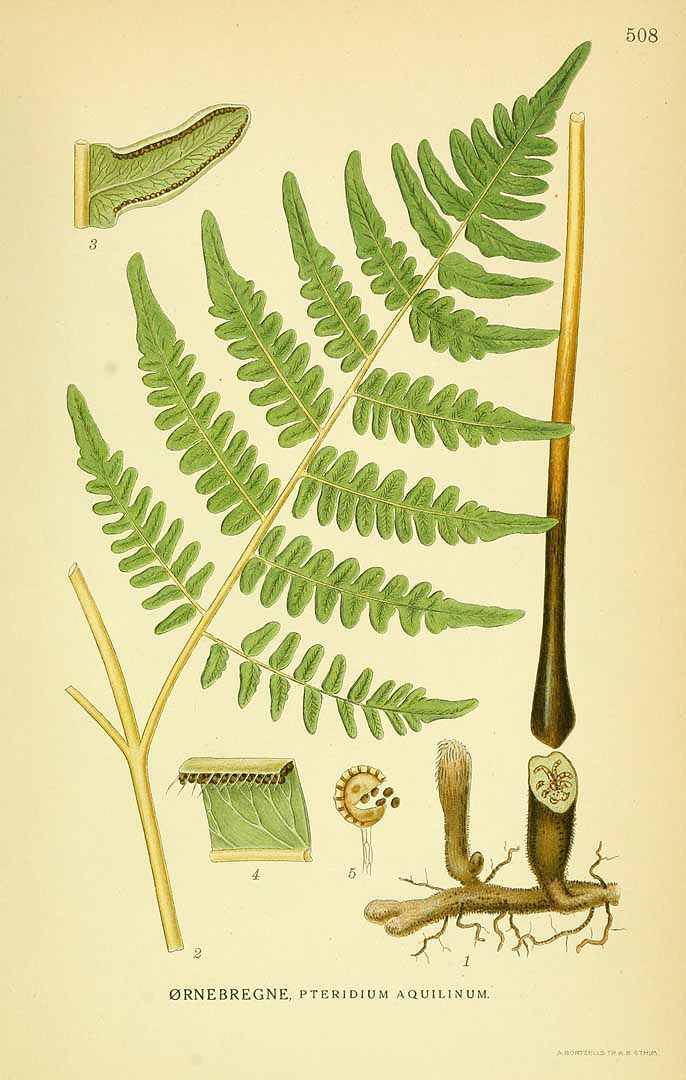! Nouveau site ici !
Vita > Plantae > Pteridophyta > Polypodiopsida > Polypodiales >
Dennstaedtiaceae > Pteridium
Pteridium aquilinum
(Fougère aigle)
![Illustration Pteridium aquilinum, Par Oeder, G.C., Flora Danica (1761-1861) Fl. Dan. vol. 13 (1836-1840) [tt. 2161-2340] t. 2303, via plantillustrations](../inc/images/illustrations/pteridium_aquilinum2.jpg )

 | ** - **
| ** - **
Vita > Plantae > Pteridophyta > Polypodiopsida > Polypodiales >
Dennstaedtiaceae > Pteridium
Pteridium aquilinum
(Fougère aigle)
![Illustration Pteridium aquilinum, Par Oeder, G.C., Flora Danica (1761-1861) Fl. Dan. vol. 13 (1836-1840) [tt. 2161-2340] t. 2303, via plantillustrations](../inc/images/illustrations/pteridium_aquilinum2.jpg )
Une fougère. Les feuilles sont charnues et simples. Ils sont coriaces. Les spores sont sur des pointes aux extrémités de la plante (traduction automatique)
⬀
Le  donne accès au menu
donne accès au menu (c'est votre point de repère) 😊 ;
En dessous vous avez la classification, à partir de la vie (Vita, premier rang) jusqu'à la classe au dessus de la plante, dont vous trouvez ensuite le nom scientifique/botanique (latin) puis le nom commun (français), le cas échéant ;
C'est aussi un lien vers la fiche complète (tout comme la ✖, en bas à droite, et le +, en dessous de la description) ;
Vient alors l'illustration (ou ce qui la remplace, en attendant), la comestibilité :
Et en bas
⬂


![Illustration Pteridium aquilinum, Par Oeder, G.C., Flora Danica (1761-1861) Fl. Dan. vol. 13 (1836-1840) [tt. 2161-2340] t. 2303, via plantillustrations - Fermer Illustration Pteridium aquilinum, Par Oeder, G.C., Flora Danica (1761-1861) Fl. Dan. vol. 13 (1836-1840) [tt. 2161-2340] t. 2303, via plantillustrations - Fermer](../../inc/images/illustrations/pteridium_aquilinum2.jpg )


